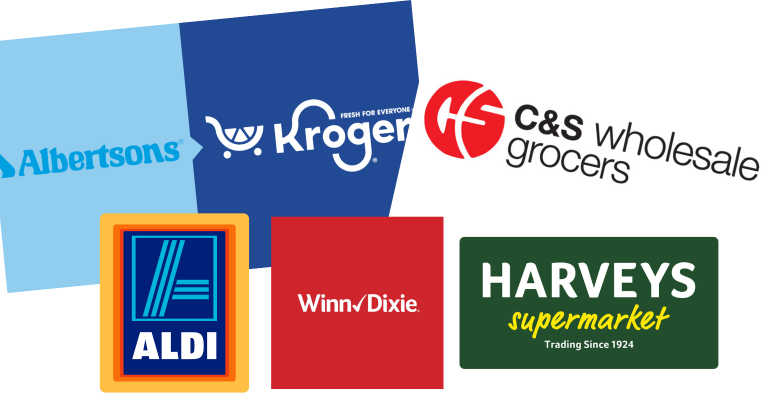 Rob Kaufelt is the former owner of Murray’s Cheese Shop in Greenwich Village, which he sold to Kroger Supermarkets. Today there are over 1,000 Murray’s cheese shops across the land. Prior to that, he pioneered upscale supermarkets as President of Mayfair Supermarkets (Foodtown), and specialty foods at Kaufelt's Fancy Groceries. He lives in New York City with his wife and three children.
Rob Kaufelt is the former owner of Murray’s Cheese Shop in Greenwich Village, which he sold to Kroger Supermarkets. Today there are over 1,000 Murray’s cheese shops across the land. Prior to that, he pioneered upscale supermarkets as President of Mayfair Supermarkets (Foodtown), and specialty foods at Kaufelt's Fancy Groceries. He lives in New York City with his wife and three children.
The current round of consolidations in the grocery industry reminds me of that old grocery joke. The store manager puts up an end cap of Hellman’s Mayo (or Coke, or Pepsi, or Heinz Ketchup – take your pick) with a big sign reading: ‘Sale! 99 cents!’ His grocery manager says, “Boss, the cost per jar is $1.22. How are we going to make any money at this price?” To which the manager replies, “Don’t worry, we’ll make it up in volume.”
And so it goes with consolidation. Unable to increase sales the old fashioned way (sell more stuff), and having already raised prices (and margins) by passing along costs in a post-Covid inflationary period, the quickest path to growth is to buy up the competition. Then the hope is that the synergies of combining two companies will produce a winning formula.
How does the magic work? The elimination of duplication to begin with: Closing duplicate, money-losing stores in any given market helps. So does the elimination of too many mid-level managers (store-level people are less affected). Management may look to garner other savings by spinning off warehouses, factories, backroom admin (especially IT) and other costs. The notion of better procurement of goods and services sounds good on paper, but rarely happens at scale.
If all goes according to plan, the acquisition will pay for itself, or at least finance the debt, or at least the interest on the debt, and thus move the share price upward, the intended goal of any public company. Which is what usually happens, at least at first. Consolidation covers many sins, as the new entity is now a new company, and there’s confidence it will all work out.
A personal example:
In the 70’s, when our family business, Mayfair Supermarkets (trading under the Foodtown banner as part of the Twin County Grocers co-op) operated 12 stores, we acquired 12 more Food Fair markets (trading as Pantry Pride) that were exiting the New Jersey market. The extra revenues were exciting at first, and since the same team was in place to do what we hoped would be double the revenues, the bottom line seemed assured.
The crunch came when our work force, relatively well managed with many long-term staffers, merged with the new employees, bitter from years of poor management, many rounds of cutbacks, no job security, and terrible labor union relations. Things were tense. The poor morale of their employees affected ours, rather than the reverse happening as we’d hoped. Our due diligence failed to properly account for the fact that capital improvements had been neglected for years, even daily repairs and maintenance, hence a huge cost to us to bring the stores up to par. We lost money for a long time until trust was established, and the store operations improved.
Now, assuming all the deals go through, we have Kroger acquiring Albertsons, C&S Wholesale presumably buying the stores spun off from the deal, and Aldi buying Winn-Dixie and Harveys. Each of these deals has merit, and may well take place, but the results are never quite as anticipated.
The recent headlines: “Kroger squeezed as budget conscious shoppers pull back (WSJ Sept. 10),” and “Kroger badly needs this deal to close” (same issue, different article) indicate the market knows what’s at stake. The numbers reveal more, at least about Kroger (Full disclosure: I sold my business, Murray’s Cheese, to Kroger in 2017 and have no further involvement with either company today).
Grocery inflation in the past year has dropped from 13.5% to 3.6%; Kroger’s total market share has dropped from 12.1% to 10.7%, while at the same time, low-cost leaders like Walmart and Costco have seen market shares have risen. Kroger says it expects to see a sales decline in the months ahead, due to competition from these price side operators, including Aldi.
With its fixed costs, vertical integration, and higher debt service, Kroger needs a formula for growth. In the age of brand marketing, with approximately 32 different store banners post-acquisition, brand identity will be more difficult to manage than the competitors’ single brand, something that Kroger did very well when its acquisitions were one at a time, market by market, insuring that regional brand identities were eroded only a little, if at all. A major reshuffling in brands, in Chicago and other markets, will be sure to confuse customers unless each one is better handled than the Albertsons/Safeway/Haggen debacle of a few years back. And if wage growth and a tight labor market continue, then labor costs might well outstrip inflation, putting another squeeze on the bottom line.
Whether the current round of consolidation improves the fate of each of the companies involved remains to be seen. The government has not given its stamp of approval, but the market is betting things will play out as reported. As is so often the case, there will be winners and losers. It remains to be seen which camp each of these players will fall into when the dust finally settles.





